Anasazi State Park
This museum features the Anasazi artifacts, the ruined walls, and other structures from an ancient Native American village, known as the Coombs Site. The village was occupied from 1060 to 1235 A.D. It was one of the largest Ancestral Puebloan (Anasazi) communities found west of the Colorado River. Part of the ancient village has been reconstructed. The excavation unearthed about 100 buildings, plus thousands of artifacts which are on display in the parks museum. Anasazi State Park Museum offers a museum store, auditorium, outdoor picnic areas, and an information center with maps and other information about the area.
WillhiteWeb.com - Utah Sights and Attractions
Location
Anasazi Indian Village State Park is located in Boulder, near Capitol Reef National Park on Scenic Byway 12 at 460 North Highway 12. The park is a 40-minute drive from Torrey and is open year-round.
Who Were the Anasazi?
During the 15th and 16th centuries, the Navajo arrived in what is now the southwestern United States. Anasazi is a Navajo word interpreted to mean ancient enemies or enemy ancestors. Ancestors of their foe, the modern Pueblo Indians, inhabited the area prior to the Navajo. What the Anasazi called themselves, however, probably never will be known. More recently, some archeologists adopted the term Ancestral Pueblo, which suggests common ties with modern Pueblos. Although Ancestral Pueblo is probably more accurate, archeologists have used the term Anasazi for many decades, and it now is generally accepted. It refers to village-dwelling farmers who existed in the southern Colorado Plateau of the Four Corners region of Utah, Colorado, New Mexico, Arizona, and southern Nevada between about A.D. 1 and 1300.
Coombs Site Excavation
Major excavations at the Coombs Site were undertaken by the University of Utah in 1958 and 1959. Small-scale excavations occurred in 1927 by the Peabody Museum and again by state parks staff between 1970 and 1991. Excavations uncovered 97 rooms, 10 pit structures, and hundreds of thousands of artifacts. Although major structures have been identified, only about half the site has been investigated. Outlines of unexcavated rooms can be glimpsed across the site. Future excavations would undoubtedly modify some interpretations of the site.
Village Abandonment
Village inhabitants departed about A.D. 1175 and never returned. Some possible causes may have been resource exhaustion, pressure from outsiders or population growth. Whatever the reason or reasons, the region was not reoccupied until the latter part of the 19th century. At or shortly after abandonment, the village was burned, possibly by the inhabitants. The villagers fate is unclear, but they may have returned to the Kayenta region and re-established themselves.
Museum
Interactive exhibits provide visitors the opportunity to grind corn using a mano and metate, identify seeds with a microscope, make rubbings of pottery designs and listen to American Indians and archeologists discuss the importance of preserving archeological sites. There is an auditorium and gift shop. A short trail from the visitor center leads to the Coombs Site Ruins and a life-size, six- room replica of part of the pueblo. The replica gives the visitor an idea of what life was like for the Anasazi between 800 and 900 years ago.
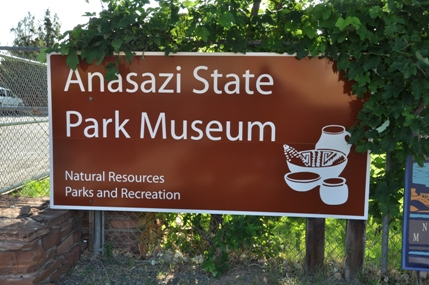
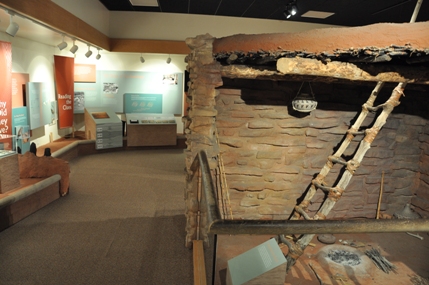
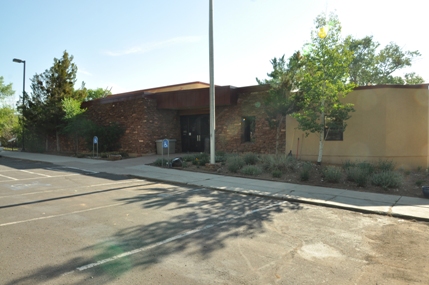
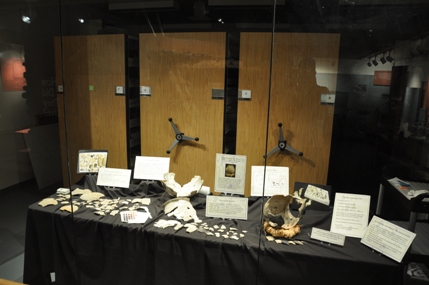
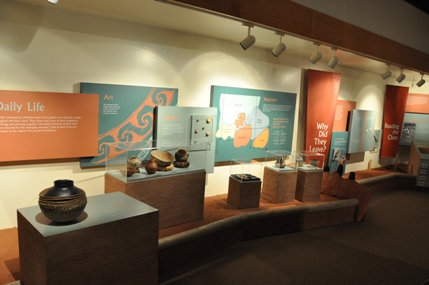
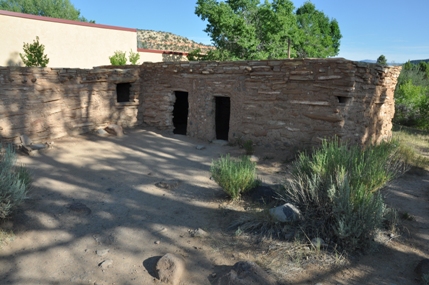
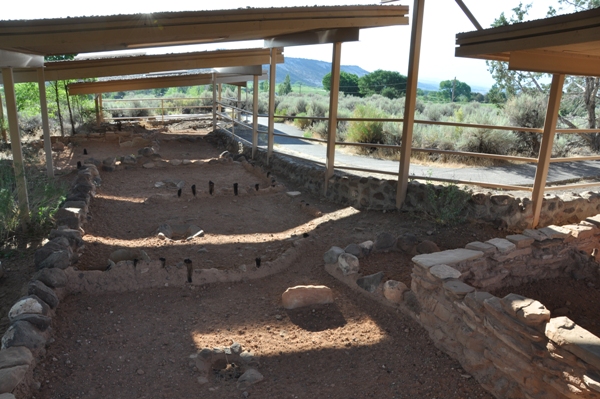
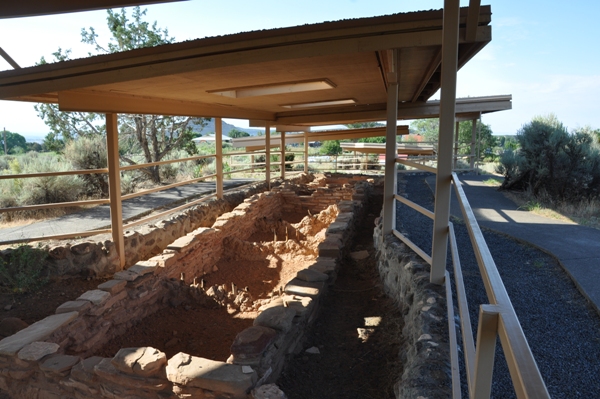
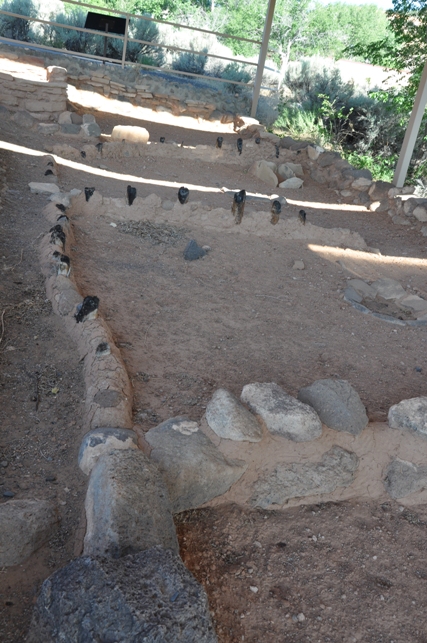
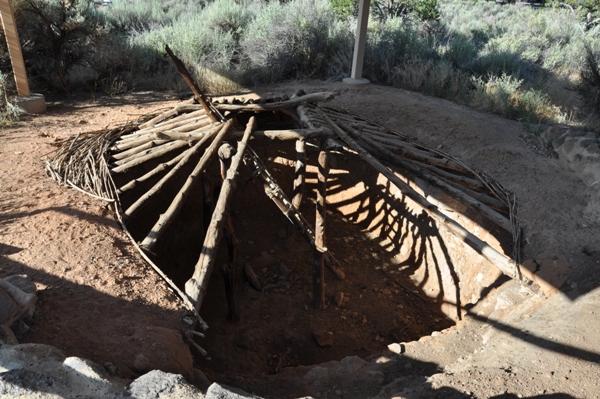
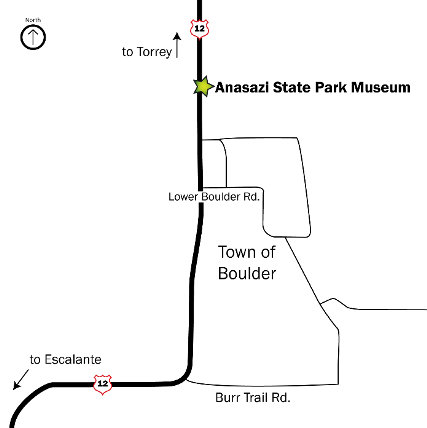
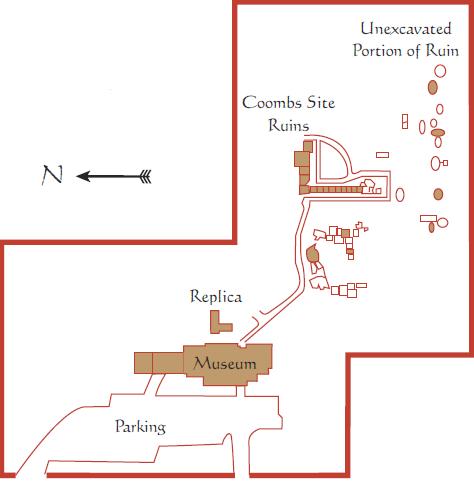
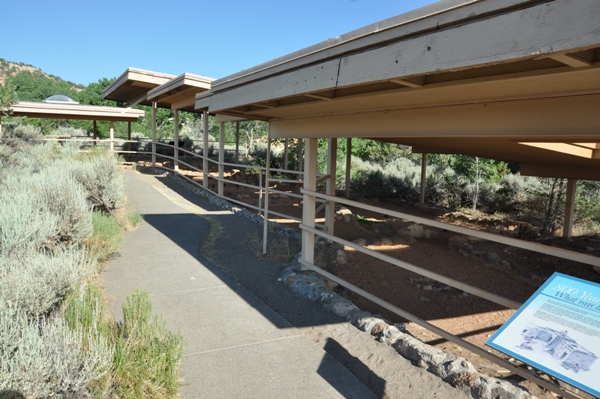
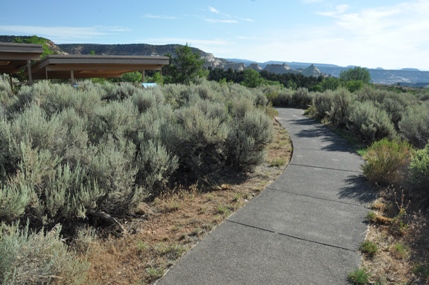
Construction of a pithouse began by digging a pit, over which a roof of poles, brush, an dmud was added. Unlike other prehistoric villages, both pithouses and pueblo room blocks at the Coombs Site were lived in at the same time.
A replica of an above ground structure













